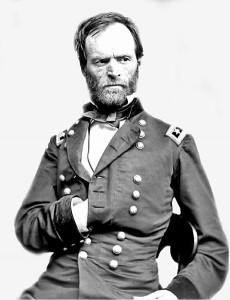A good raconteur like Ross McElwee never sticks to the “script” when a better story comes along. Case in point: his idiosyncratic 1986 documentary, Sherman’s March, in which the filmmaker planned to retrace the fateful footsteps of General William Tecumseh Sherman, the Union commander who had lived in and loved the South yet cut a wide swath of devastation through Dixie during the Civil War. But then McElwee’s girlfriend dumped him just as he was about to begin filming and his quest became more of a personal one–an attempt to shake up his romantic life in the region where he was born and raised.
It might sound narcissistic for someone to sweep aside the carnage of war to focus on his own aching heart, but the result captures so much about the wry and unexpected nature of the South that it’s hard to argue with the decision. McElwee films himself spending time with a wide array of unpredictable belles: singers, actresses, Mormon schoolteachers, survivalists, linguists and lawyers. Some are old girlfriends that the North Carolina native is revisiting and some are women he meets along the way. Yes, there’s also Burt Reynolds and a Burt Reynolds impersonator, but mostly it’s about the women. While McElwee and his dates don’t do as much damage as Sherman, by the time his sojourn is complete the director’s heart could use a body bag and a 21-gun salute..
At one point, McElwee’s cantankerous old teacher and longtime friend Charleen Swansea insists he put down his camera. “You’re using it as a hedge, as something to hide behind,” she says, ordering him to find a nice Southern woman to marry. But it’s really more complicated than that. McElwee had relocated to the Northeast years before and feels like a stranger in a strange land when he goes home. Like Sherman himself, the director is familiar with the terrain but gradually realizes he can never belong to it again. (Available from Netflix and other outlets.)
More Film Posts:
- New DVD: Mother.
- Classic DVD: Picnic at Hanging Rock. (1975)
- Classic DVD: Thieves Like Us. (1974)
- New DVD: Forbidden Lies.
- Strange, Small & Forgotten Films: The Bothersome Man. (2004)
- Classic DVD: Brief Encounter. (1945)
- Strange, Small & Forgotten Films: Police Beat. (2004)
- Classic DVD: The Killing. (1956)
- Strange, Small & Forgotten Films: Confessions of a Superhero. (2004)
- New DVD: The Exploding Girl.
- Strange, Small & Forgotten Films: Hi, Mom! (1970)
- New DVD: Videocracy.
- New DVD: Afterschool.
- Strange, Small & Forgotten Films: Chan Is Missing. (1982)
- Strange, Small & Forgotten Films: Targets. (1968)
- Classic DVD: Logan’s Run. (1976)
- Strange, Small & Forgotten Films: The Silent Partner. (1978)
- Classic DVD: Head. (1968)
- New DVD: Bad Lieutenant: Port of Call New Orleans.
- Classic DVD: The Phantom of Liberty. (1974)
- Strange, Small & Forgotten Films: The Face of Another. (1966)
- Strange, Small & Forgotten Films: Blast of Silence. (1961)
- Strange, Small & Forgotten Films: Night Moves. (1975)
- New DVD: Greenberg.
- New DVD: Big Man Japan.
- Classic DVDs: Symbiopsychotaxiplasm Take One. (1968)
- Classic DVD: The Holy Mountain. (1973)
- Classic DVD: Beat the Devil. (1953)
- Strange, Small & Forgotten Films: All the Vermeers in New York. (1989)
- Classic DVD: “La Jetée.” (1962)
- New DVD: The T.A.M.I. Show.
- Strange, Small & Forgotten Films: Bad Company. (1972)
- Classic DVD: The Other. (1972)
- Strange, Small & Forgotten Films: The Naked Kiss. (1964)
- Strange, Small & Forgotten Films: “La Soufriere.” (1976)
- Classic DVD: Network. (1976)



